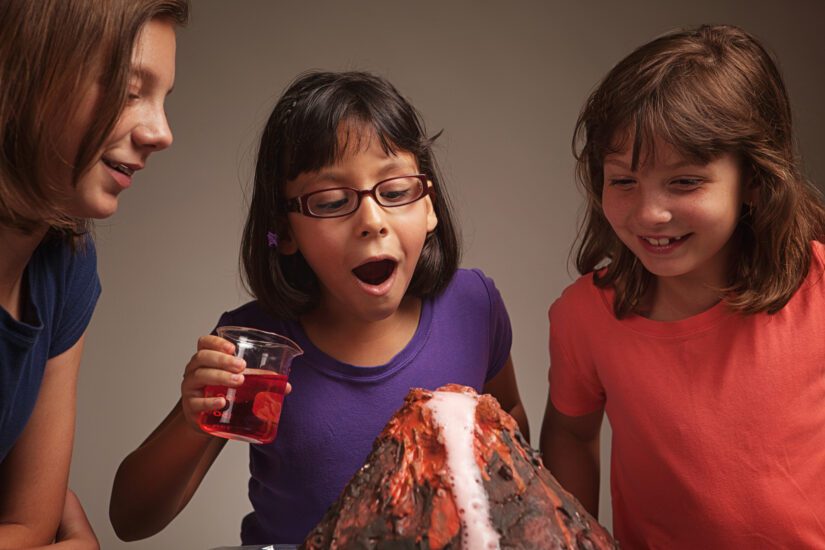Whether you have an upcoming science project for class or you just want to do something fun (and educational), Tutor Doctor has some awesome science experiments you can try at home! Remember to always use parental supervision.
Oil and Water Layers
What you’ll need:
- A jar with a lid (preferred) or a tall glass
- Vegetable cooking oil
- Water
- Food coloring
This classic experiment demonstrates the concept of density, and literally proves the saying “oil and water don’t mix.” Why is it that sometimes objects are the same size, but one is heavier? Why is a glass marble heavier than a plastic one? The answer has to do with density, which scientifically is the relationship between an object’s mass and its volume. In this case, we can prove that oil is less dense than water. By adding colored water and oil to a jar or glass, they will naturally separate. Even if the fluids are shaken vigorously, the oil and water will re-separate. Because oil is less dense than water, it will always float to the top! There are several variations on this experiment where you can test other liquids as well, such as corn syrup, rubbing alcohol, and more. Here are some resources with additional information and ideas!
Layered Liquids: Science Is Fun
Seven-Layer Density Column: Steve Spangler Science
Oil and Water: Questacon
Baking Soda and Vinegar Volcano
What you’ll need:
- An empty 2-liter bottle or plastic container, or a homemade “volcano” cone
- Baking soda
- Vinegar
- Dish soap
This is a classic experiment from science classes everywhere, and it never fails to disappoint! The chemical reaction between vinegar and baking soda creates a gas, carbon dioxide. When the pressure builds up inside the container, the bubbling gas is forced through the opening, creating an awesome “eruption” effect. This demonstrates concepts of pressure and visualizes what happens in real volcanoes. Many students build their own volcanoes from a flour-type dough (or even papier-mâché) and dye the “lava” with red food coloring. There’s also plenty of variations on this experiment, so here are some great resources to give you some ideas!
Baking Soda & Vinegar Chemical Volcano: Thought Co.
Baking Soda Volcano: Weather Wiz Kids
How To Make A Volcano: Science Fun For Everyone
Tornado in a Bottle
What you need:
- A clear plastic bottle (2-liter preferred)
- Water
- Dish soap
- Glitter
This experiment visualizes the formation of a vortex, just like a mini tornado! It can actually be accomplished with either one or two bottles. The glitter serves to make the water current easier to observe. When the bottle is turned upside down rapidly in a circular motion, a mini tornado will form in the water. This is even cooler with two bottles, as they can be duct-taped together at the openings. When the “twister” tube is turned upside down, water will begin to spiral into the empty bottle. It’s a very interesting effect that demonstrates how the water spins rapidly around the funnel of the vortex due to an inward (known as centripetal) force. This experiment helps to show the relationship between air pressure, water pressure, and gravity, and can help students visualize how real tornadoes and hurricanes are formed. Here are some helpful instructions to get started!
Vortex: Exploratorium
Tornado in a Bottle: Cool Science Experiments HQ
Tornado in a Bottle: Steve Spangler Science


